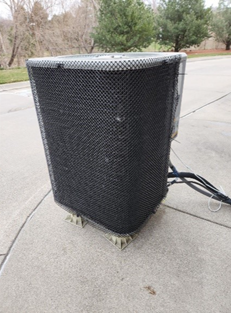By Chad Engle, Loss Prevention and Safety Manager
According to CoreLogic’s 2024 Severe Convective Storm Risk Report released February 22, severe convective storms (thunderstorms that may include heavy rain, hail, intense winds, and tornadoes) caused tens of billions of dollars of insured losses across the U.S. The report identifies the 2023 hail season as the most active of the past two decades, and hail as the leading cause of damage.
Nebraska recently observed Severe Weather Awareness Week, an important reminder for communities to be prepared for severe weather to strike at any time. Nebraska’s annual statewide tornado drill is normally held on the Wednesday of severe weather awareness week. NIRMA takes this opportunity each year to review our severe weather response procedures and conduct our annual tornado drill. Once that is complete, we hold our annual fire drill. Taking the time to review how we prepare and respond to severe weather is another way to keep our employees safe during the spring severe weather season.
It is also important for our members to prepare all county and agency buildings and property for the upcoming severe weather season. Commercial and homeowners’ property coverage costs are on the rise because of the increase in severe thunderstorms. There is not much a property owner can do to prevent severe weather, but there are things a property owner can do to reduce the amount of damage they sustain during the severe weather season.
There are steps you can take to protect your facility from hail. Hail damage to roof coverings and roof mounted equipment such as air conditioners, vents and skylights is common. Protective shields commonly referred to as “hail guards” or “hail screens” can be installed to protect this fragile equipment, both ground and roof mounted, from hail stones.
 Pictured is a ground-mounted AC unit at NIRMA’s headquarters that required protective hail screening. The hail screen was relatively inexpensive, when compared to replacing or repairing damaged condenser coils, and simple to install.
Pictured is a ground-mounted AC unit at NIRMA’s headquarters that required protective hail screening. The hail screen was relatively inexpensive, when compared to replacing or repairing damaged condenser coils, and simple to install.
Regular roof inspections help you maintain your roof in good condition and assist in keeping it free from defects. The goal of the inspections is to identify small defects and damaged areas to repair before they turn into larger problems. If we repair the small hole in the roof before the spring rains or snow melts, we prevent water from entering and causing severe damage and costly claims.
Another condition to look for during inspections is blistered roof covering. Blisters leave the covering more susceptible to damage from wind and hail. These air-filled blisters are easily penetrated by hail stones which allows water to leak in leading to possible electrical damage, mold, and other issues that are costly to repair. The blistered areas are more prone to wind damage as the roofing material above the blister is no longer attached to the roof allowing it to be lifted by the strong winds that regularly accompany spring and summer storms.
Roof inspection checklist:
-Roof inspected regularly
-Access to rooftop safe and secured
-No missing screws on equipment housing or strapping
-Satellite dishes secure by concrete blocks
-No loose flashing, shingles, or gutter system parts
-Gutters clean and clear of obstructions, no loose or disconnected parts
-Debris removed after storms
-Drains and scuppers clear of debris
-Nothing stored on the roof
-No signs of hail damage
-Hail guards installed to protect roof mounted HVAC equipment
-No standing water on roof surface (should be gone within 48 hours of recent water event)
-Snow not permitted to accumulate
-Discoloration of roof surface
-No signs of cracks or areas for water penetration
-No cracks or gaps in caulked areas
NIRMA’s Best Safety Practice for Members #8, “Perform regular documented inspections of all workplace sites,” has application to roofs too. We ask our members to inspect their buildings and properties at least twice annually. Quarterly is a preferred frequency. Spring is here, hopefully bringing with it much needed moisture. Be sure your buildings and properties are ready to withstand the water and wind they will surely be subjected to.
You can find NIRMA’s Property/Building Inspection Checklist by clicking on Inspection Forms and Checklists under the Resources menu on NIRMA’s website at https://nirma.info. As always, I can be reached at chad@nirma.info and 1.800.642.6671.

